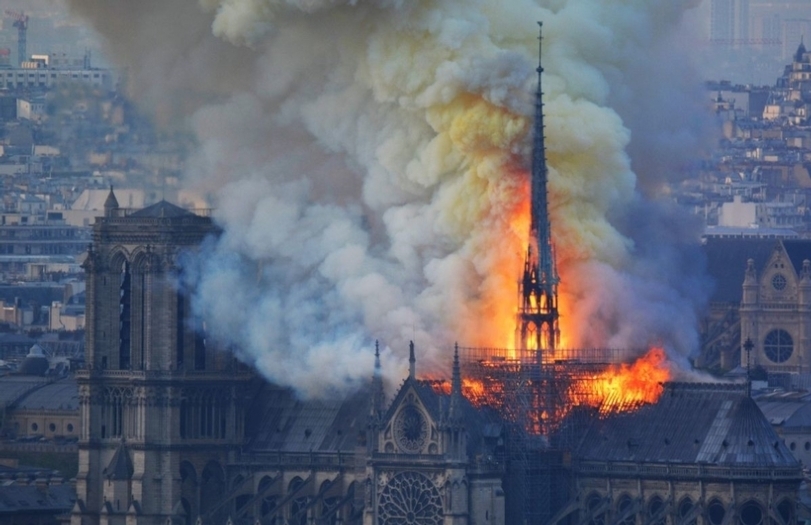You don’t know what you’ve got ‘til it's gone
by Peter Aiers, Chief Executive, The Churches Conservation Trust
Due to its status as one of the most iconic cathedrals of the world, Notre-Dame has attracted global attention in terms of sympathy - and more practically – material support in terms of funds and professional help. I have been interviewed on radio stations across the UK and in the USA by a media speculating on the impact and potential solution for this damaged building.
Whilst discussing the current plight of Notre-Dame, I considered the parallels and contrasts of the reaction to this catastrophe to the work of the CCT. We often feel that we have a difficult job explaining to society why the old buildings that we curate on behalf of the nation are important and why we should all value them. This is a particularly difficult task when it comes to asking for financial support. Churches are located nationwide and there are significantly fewer people using them for their religious purpose (particularly in rural areas). In 5 to 10 years’ time it is unlikely that the Church of England parish system of managing and maintaining the stock of historically and architecturally important buildings in the countryside will be viable. Historic church buildings need the financial support of many more than those who attend.
The global support for Notre-Dame clearly shows society’s love for historic places of worship due to the sense of history and the symbolism that they represent. In England we have a wealth of historic places of worship and at the heart of most communities stands an ancient church building that represents that place within England, just as Notre-Dame symbolises Paris, and France. These churches are important as they represent that community, whether the community reciprocates it or not! The historic parish church is “yours” and also “ours” because of where we live; they transcend division, they are your building because you live there. This is true in all senses, the historic parish church can mean many things to you - you may hate it, you may love the architecture, you may love the carpentry and rich fabrics, the stained glass, you may love it as your Gran was married there, or your school went there for Christmas carols, you might even be a Christian or just love the rich history of your community embedded in the walls. Whatever your reaction, there is no doubt that this is the most democratic of historic buildings, which tells a story of everybody in that place over many centuries, from the richest to the humblest.
In order to keep these symbols of place and our shared history together, they do need investment. In recent times Notre-Dame was struggling to raise the funds necessary to undertake repairs, but following disaster there has been a staggering number of pledges and gifts to date. Now – of course I do not advocate fires in our historic parish churches as a means of fundraising, but this disaster does demonstrate the old adage “you don’t know what you’ve got ‘til it’s gone”.
I believe we should use this momentum of support caused by the fire at Notre-Dame to demonstrate how it translates to our priceless collection of historic parish churches. Regardless of religious affiliation, our communities should be encouraged to support their local historic parish church by donating regularly for ongoing maintenance which can prevent disaster striking and, of course, by using the building. This could be for cake sales, theatre, music, worship, gin festivals, beer festivals or even Champing™. We need to constantly reiterate that community support for the local historic parish church is the difference between the next generation having the benefit of this most precious of cultural assets, and it not.
Find out more about our work and join us in our mission to support communities use and love their historic places of worship.

